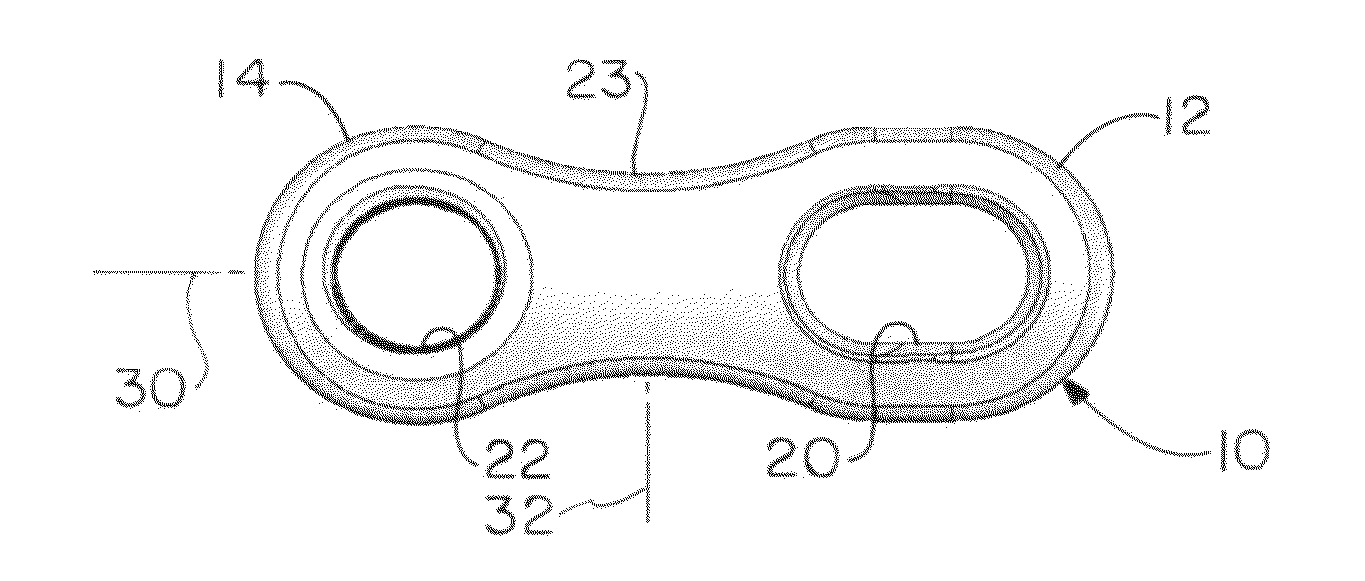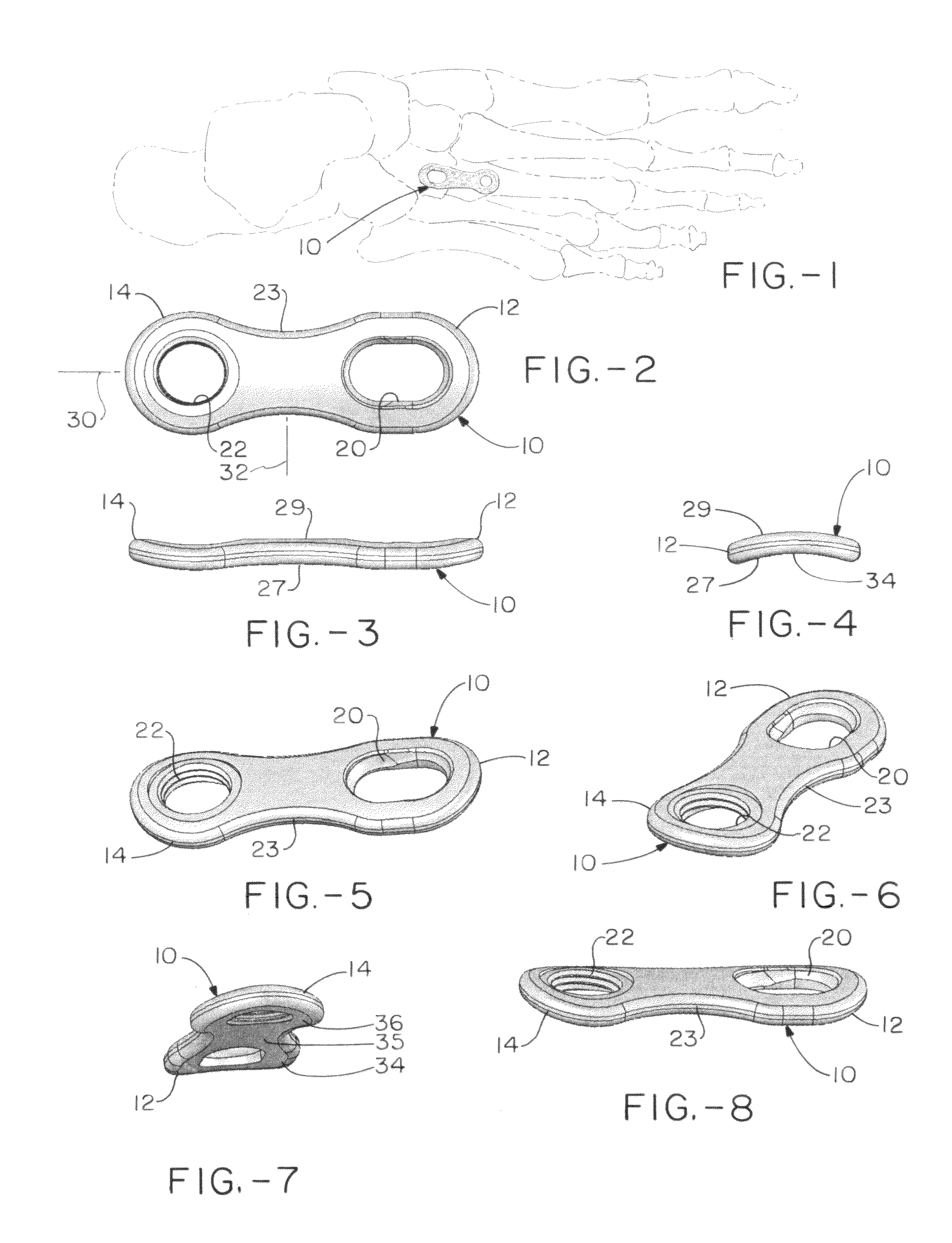Orthopedic plate for use on a single ray in the midfoot
a single-ray, orthopedic technology, applied in the field of orthopedic plates, can solve the problems of severe fractures and/or dislocations, development of problems, and trauma to the midfoot, and achieve the effects of less damage to the bone, improved compression, and improved pull-out values
- Summary
- Abstract
- Description
- Claims
- Application Information
AI Technical Summary
Benefits of technology
Problems solved by technology
Method used
Image
Examples
Embodiment Construction
[0019]FIG. 1 shows a skeletal version of a foot from the top (i.e. the dorsal view) with the midfoot plate 10 of the present invention in place between the junction of the third metatarsal and the third cuneiform (i.e. the lateral cuneiform). Thus. FIG. 1 illustrates the plate used in fixation of the bones of the third ray or 3nd TMT (tarso-metatarsal) joint. The plate can also be used for fixation of the first and second ray, that is, for fixation of the 1st TMT joint (1st metatarsal to medial cuneiform) and 2nd TMT joint (2nd Metatarsal to middle or intermediate cuneiform). Similarly, it can be used for fixation of the joints of the other rays, for example where a surgical staple might currently be used.
[0020]As viewed from the top in FIG. 2, it can be seen that the plate 10 has two opposing tabs comprising a longer tab 12 and a second shorter tab 14 aligned along the longitudinal axis of the plate. The longer tab 12 includes a compression slot 20, and the other 14 of the pair of ...
PUM
 Login to View More
Login to View More Abstract
Description
Claims
Application Information
 Login to View More
Login to View More - R&D
- Intellectual Property
- Life Sciences
- Materials
- Tech Scout
- Unparalleled Data Quality
- Higher Quality Content
- 60% Fewer Hallucinations
Browse by: Latest US Patents, China's latest patents, Technical Efficacy Thesaurus, Application Domain, Technology Topic, Popular Technical Reports.
© 2025 PatSnap. All rights reserved.Legal|Privacy policy|Modern Slavery Act Transparency Statement|Sitemap|About US| Contact US: help@patsnap.com


